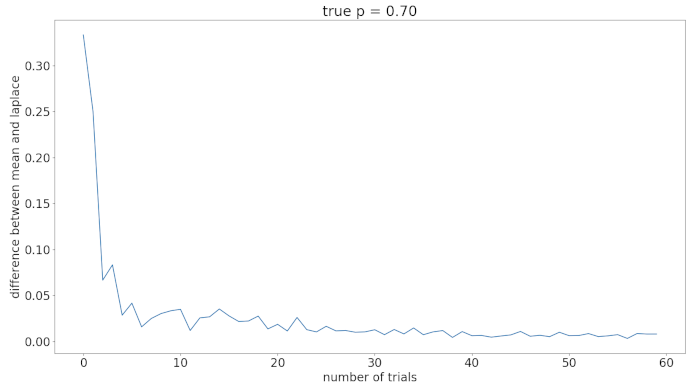When Not To Use Bayesian Probability Estimation
When can Bayesian methods lead to the same or similar results as simpler traditional methods? When can it be advantageous to use Bayesian methods instead of traditional ones? This is an attempt at exploring these questions for a particular scenario.
The scenario in question is taken from a 2020 Youtube video advocating for the use of Bayesian probability estimation. The video itself is based on a 2011 blog post. Their scenario goes like this: suppose we have to choose between two Amazon sellers, for the exact same product, and at the exact same price.
| Seller | Total No. of Reviews | No. of Positive | Percentage Positive |
|---|---|---|---|
| A | 100 | 85 | 85% |
| B | 20 | 18 | 90% |
90% of seller B’s reviews were positive, but this is just from 20 reviews. There is more information from seller A’s 100 reviews. However, only 85% of seller A’s reviews were positive. Which seller should we choose?
The Bayesian Method
Both the Youtube video and the blog post propose that instead of just relying on the sellers’ percentage of positive reviews, we can use the Bayesian method to also take into account each seller’s total number of reviews. They assume that each seller has a fixed probability
Classic statistics would use the mean
On the other hand, there are several ways to apply the Bayesian method. A common way of doing so is via this algorithm.
- Assume that
- Use Bayes’ theorem to update this assumption.
- Use this updated assumption to estimate the probability
Maximum A Posteriori Estimation
Without going into too much technical details, step 1 attempts to use an uniform distribution as an uninformative prior and step 2 updates this into a beta distribution posterior. Step 2’s update of the uniform distribution in step 1 will increase in impact as we get more data. This way, the fact that seller A has much more data (number of trial) than seller B is taken into account.
Step 3 highlights the fact that, to actually make a decision between seller A and B, we need some kind of estimate of the probability
In general, if the prior is uniform, the MAP estimator will be the same as the MLE estimator, so there is nothing extra to be gain from using the Bayesian framework this way.
Laplace’s Rule of Succession
“Laplace’s Rule Of Succession” is an alternative to using MAP in step 3. Instead of taking the mode of the posterior like for MAP, we take the mean of the posterior distribution, which is also the expected value of parameter
The math to derive this can take a little effort, but it all boils down to starting with the usual sample mean
Laplace’s Rule vs Arithmetic Mean
For large
It is obvious that the difference falls off rapidly even for small increases in
diff = []
for i in range(0,len(mean)):
diff.append(abs(mean[i]-laplace[i])
plt.plot(diff)
plt.show()
Laplace’s Rule vs Arithmetic Mean
we can see that Laplace’s rule has some form of inertia, and tend to be closer to
l_dist, m_dist = [], []
for i in range(0,len(mean)):
l_dist.append(abs(laplace[i]-0.5))
m_dist.append(abs(mean[i]-0.5))
This makes sense since the Laplace’s rule estimator
In my humble opinion, using the Bayesian approach for this scenario does not appear advantageous over the simple sample mean. It is only relevant for small samples, and only provide a small, possibly irrelevant, shift towards


